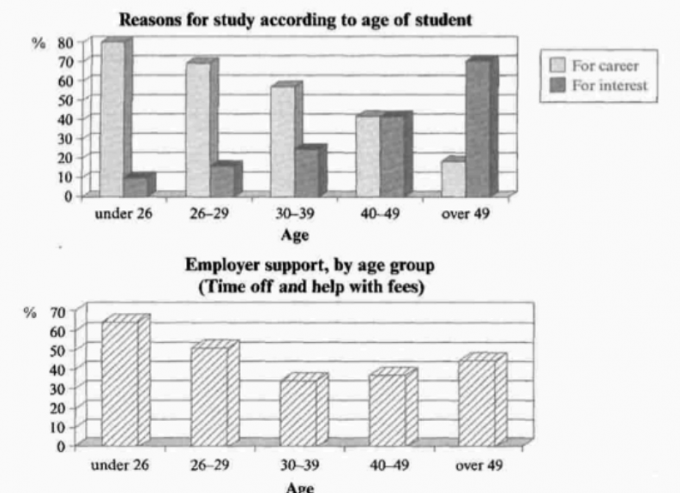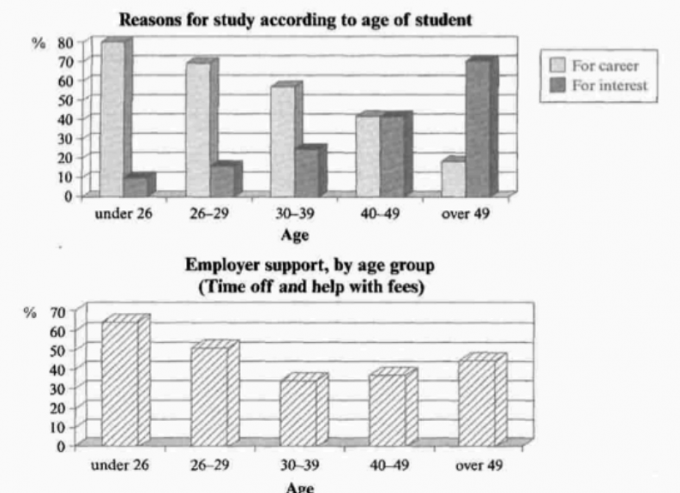The bar charts give information about the proportion of the main reasons why student, in different age groups, do study and how much employer supports them.
Overall, there is an equality of study purpose showing by student age 40-49 while the inequality proportion in each study purpose is revealed by the four other student groups. However, while the three student groups, from 30 to 49 years old, receive less than a half from all the support from the employers, student at the age under 26 and 26-to-29 years old are supported more than the former.
Turning to the details, the two groups of student receiving 79 and 80 per cent employers support tend to choose career as their study purpose then this tendency follows by 55 percent student age 30-39 on it pursuit of study purpose. However, by 47 per cent employers support helps student over 49 to pursuit their study purpose, the 40-49 student receiving 37 per cent support are likely to study around 40 per cent for career and interest reason.
A more details looked at the bar graph reveals that the proportion of study for interest in numbers is not always similar. The least proportion by 10 percent shows in student under 26. Meanwhile, while student age 26-to-29 shows higher proportion by 12 percent than the former, the 30-to-39 group records more than 20 per cent. However, the over 49 group studying for interest reaches the top notch proportion by 70 percent while 40-to-49 groups coming second by 40 per cent student study for interest purpose.
Overall, there is an equality of study purpose showing by student age 40-49 while the inequality proportion in each study purpose is revealed by the four other student groups. However, while the three student groups, from 30 to 49 years old, receive less than a half from all the support from the employers, student at the age under 26 and 26-to-29 years old are supported more than the former.
Turning to the details, the two groups of student receiving 79 and 80 per cent employers support tend to choose career as their study purpose then this tendency follows by 55 percent student age 30-39 on it pursuit of study purpose. However, by 47 per cent employers support helps student over 49 to pursuit their study purpose, the 40-49 student receiving 37 per cent support are likely to study around 40 per cent for career and interest reason.
A more details looked at the bar graph reveals that the proportion of study for interest in numbers is not always similar. The least proportion by 10 percent shows in student under 26. Meanwhile, while student age 26-to-29 shows higher proportion by 12 percent than the former, the 30-to-39 group records more than 20 per cent. However, the over 49 group studying for interest reaches the top notch proportion by 70 percent while 40-to-49 groups coming second by 40 per cent student study for interest purpose.

Reason_for_study.png


